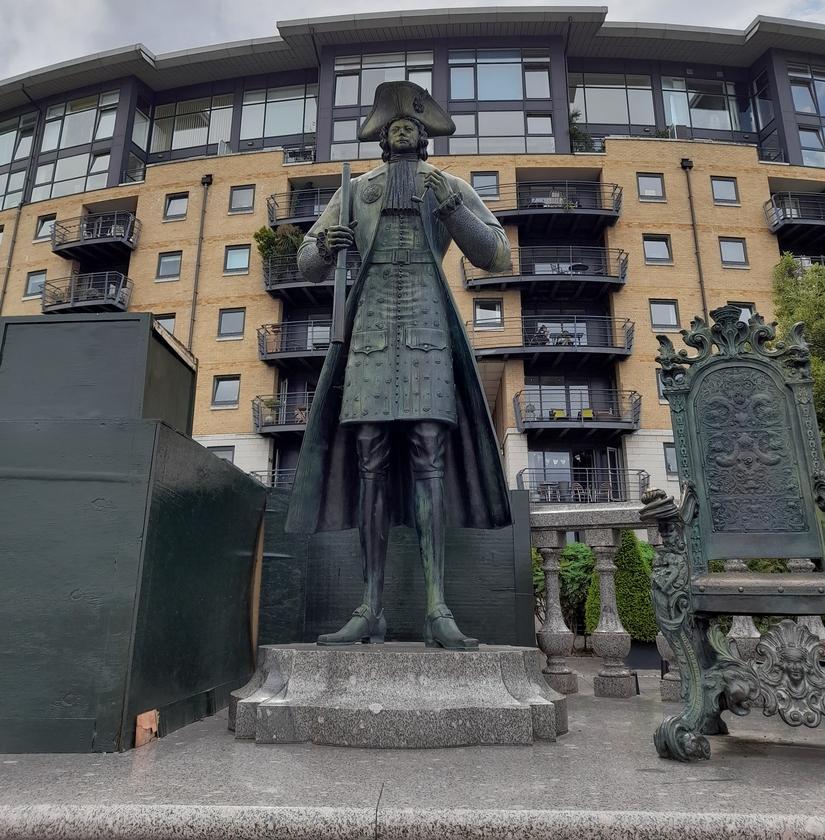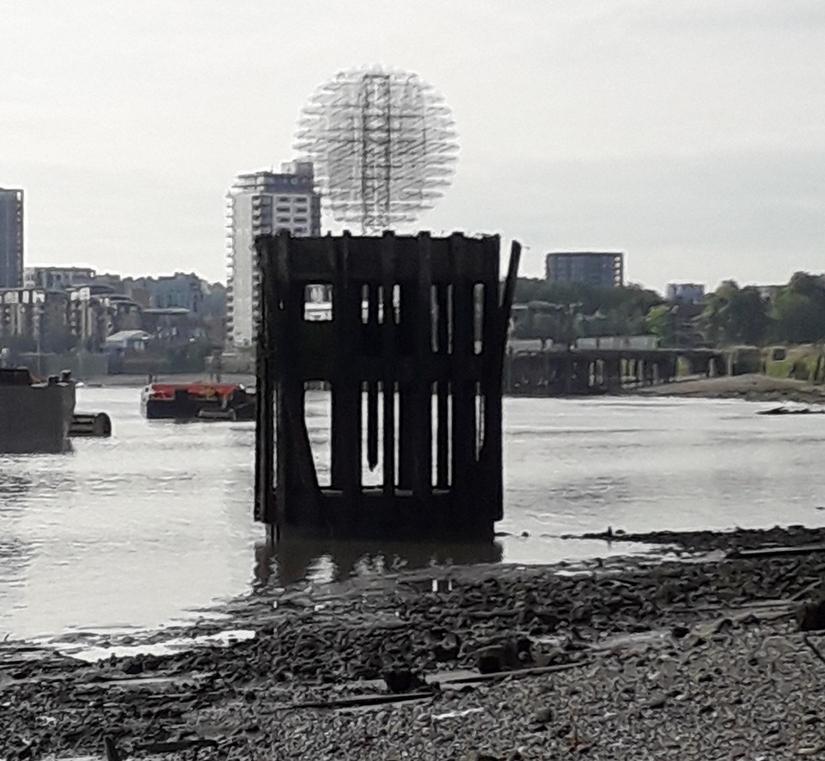Deptford’s Forgotten Shipbuilders Researching an in-depth guided walk
Every September the Thames Festival Trust organises the Totally Thames festival. This year TDP provided eight public events. These included a pair of guided walks about the shipbuilding and ship-breaking industries which once existed on the Thames. This blog shares some of the stories told in that walk.
When Henry VIII became king, he was dismayed at the lack of royal ships compared to those of the French king. Henry ordered the foundation of Royal Dockyards at Woolwich and at Deptford to build a navy. Among the first ships to be built there were the Kateryn Plesaunce and the Mary and John. Henry’s youngest daughter Elizabeth came to the throne in 1558. By then new naval technologies had appeared. Deptford Royal Dockyard produced race-built galleons like the Triumph (1562), the Ayde (1562) and the Ark Royal (1587).
The Deptford yard drew in some fascinating characters to work there. Susanna Beckford provided ironwork for ships in the later 17th century. Writers from the time suggest she was a strong character and successfully stood up to entrenched chauvinistic attitudes. A royal warrant signed by King Charles II and Samuel Pepys mentioned a 38-year-old shipwright named Ambrose Fellows was a carpenter working in the yard. He employed two apprentices and lived in Deptford with his wife and children. Mary Lacey (born ca 1740) ran away to sea, living thirteen years as William Chandler. Having trained as a ship’s carpenter, William subsequently qualified as a shipwright. Eventually William returned to living as Mary and successfully claimed a naval pension. Mary later married Deptford shipwright Josias Slade, going on to raise a family of six children.
One of the most famous visitors to Deptford was the Russian Czar Peter the Great (Pyotr Alekseyevitch). Having come to the throne in 1682 he embarked on a “Grand Embassy” around Europe from March 1697 to August 1698. He wanted Russia to become a strong naval power He therefore needed to learn about state-of-the-art ship construction and visited shipbuilding facilities in the Netherlands and in Britain. He stayed in Britain from the 11th of January to the 21st April 1688. He rented Sayes Court in Deptford and stayed there with his entourage. This included 3 interpreters, 2 clocksmiths, a cook, 70 soldiers, and a monkey. The house was owned by John Evelyn. His servant wrote to him saying: 'There is a house full of people and right nasty. The Tsar lies next your library, and dines in the parlour next your study. He dines at ten o'clock and at six at night, is very seldom at home a whole day, very often in the King's Yard or by water, dressed in several dresses.' The report is blatantly xenophobic but illustrates how strange the household would have appeared to the eyes of a Londoner. Peter and his entourage enjoyed racing through the garden in wheelbarrows, sometimes going through hedges. They are also reported to have used paintings for target practice. By the time he left the house was in need of extensive repairs amounting to over £300. The visit to England was profitable for both Russia and Britain with large quantities of Russian oak being supplied to the Royal Navy and between 60 and 500 British subjects going to work for the Tsar in Russia.

Many private dockyards also existed at Deptford. They built a wide variety of ships for customers including the Royal Navy, foreign navies, The British East India Company and other trading organisations. Ships built there were involved in the transatlantic slave trade, whaling as well as river transports used around the world. Charles Lungley’s yard built the paddle steamer Agnes Irving: launched in 1862, she was eventually wrecked in Australia. The West Deptford yard built HMS Russell (1764) which found fame after capturing an enemy ship whilst run aground at the battle of Copenhagen. Passenger skiffs and Wherries appear to have largely been built upstream and cargo barges and lighters appear to have mainly been built on the Essex coast. One exception was the Thames Barge Lady of the Lea which was built at Rotherhithe.
A short way upstream of the old Deptford Royal Dockyard you can see a sculpture of steel rods in a spherical shape. This is the Circumsphere created by Chris Marshall and Stephen Lewis with funding from Sustrans. It was erected in 1998 to commemorate the voyages of exploration whose ships were constructed, adapted, and/or supplied from Deptford. Examples of these were the Deptford built Elizabethan ship Ayde (1562), which having fought against the Spanish Armada, twice sailed in search of the North-West Passage to the Pacific around the North of the Americas. Captain James Cook seems to have favoured ships built in Whitby for his voyages. For his first voyage of exploration, the Endeavour refitted and adapted at Deptford before he took her to the South Pacific in search of undiscovered and unmapped (by Europeans at least) land there. He visited Tahiti, the Society Islands and New Zealand as well as observing a transit of the planet Venus.
The walk was well received and enjoyed by those who attended. Another in-depth guided walk in December will look at the role of Woolwich in the development of the Royal Navy and its armaments.
